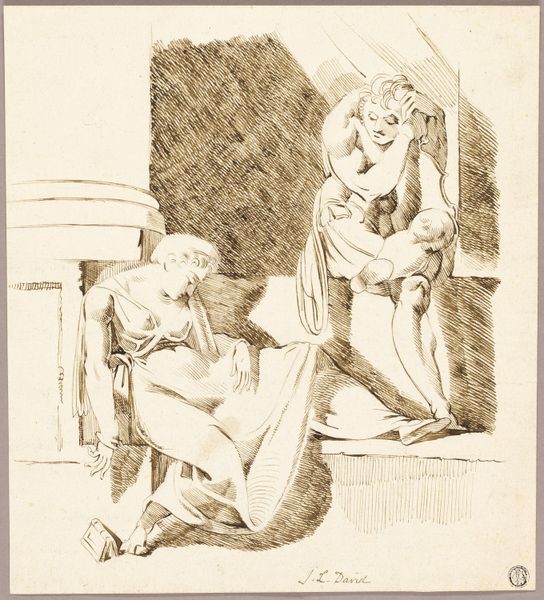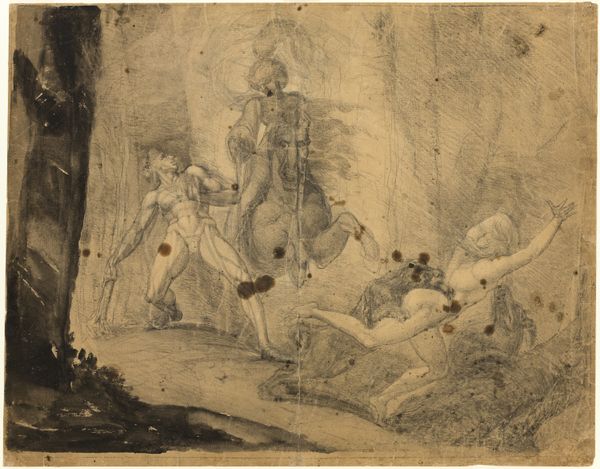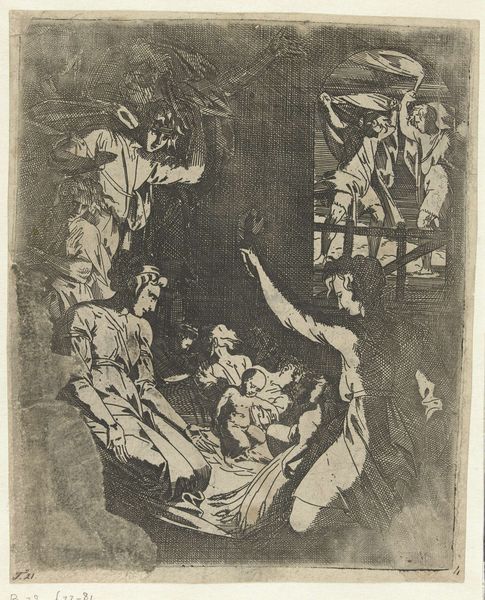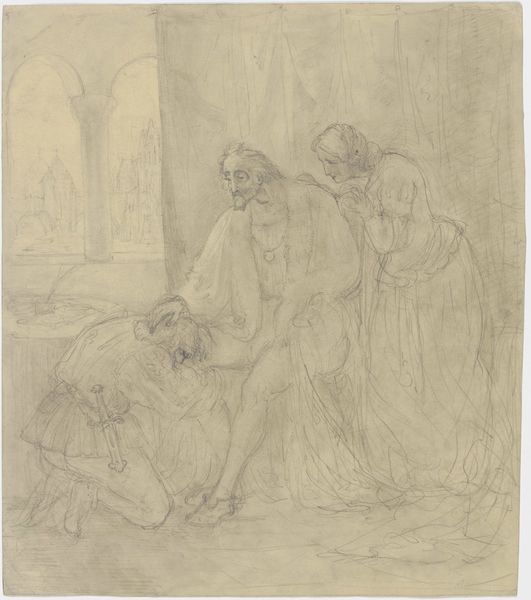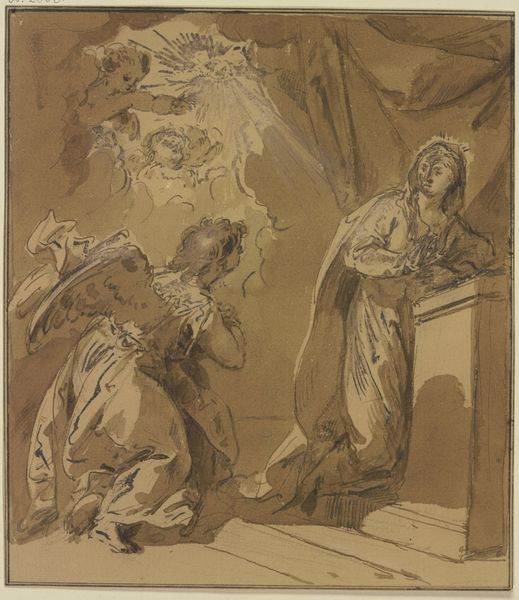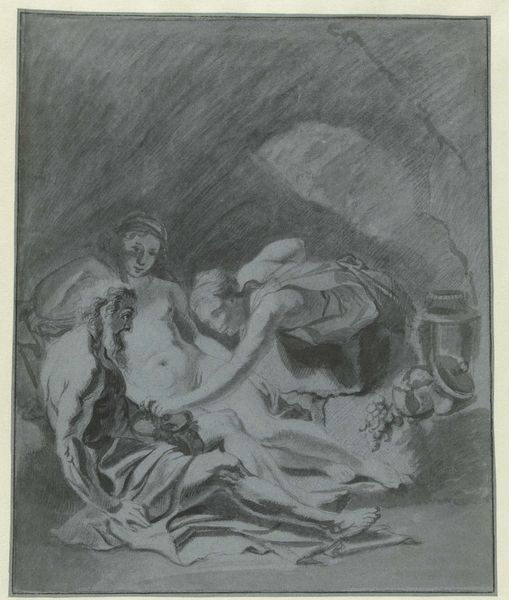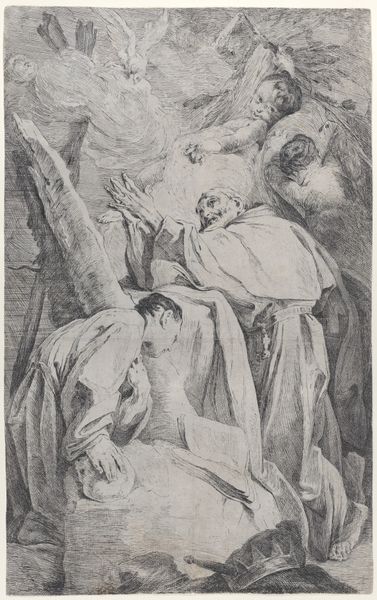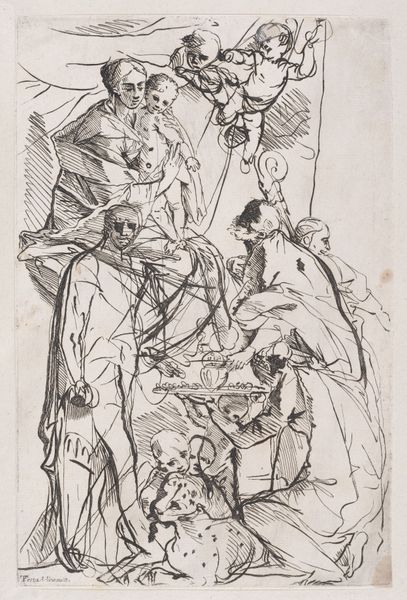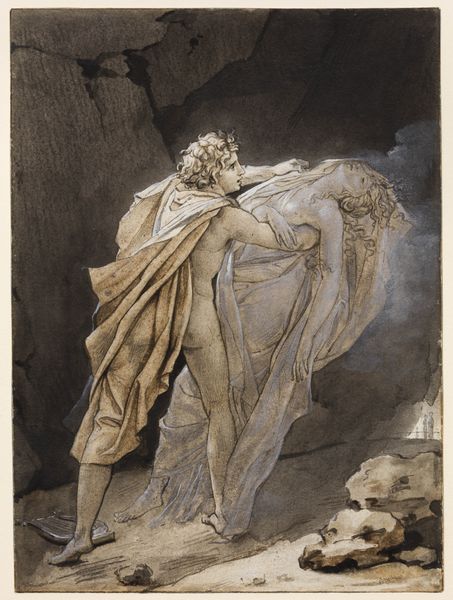
A man in despair over a tombstone in a cave with other figures 1770s
0:00
0:00
Dimensions: 410 mm (height) x 301 mm (width) (bladmaal)
Curator: This drawing, crafted in the 1770s by Johann Heinrich Füssli, is haunting. The somber mood practically seeps from the ink and paper, don’t you think? Editor: Absolutely, a potent scene! The sheer economy of line—it’s all ink wash and paper. Did Füssli sketch this rapidly? I wonder if the quality of paper had bearing on what became narrative instead of anatomical detail. Curator: The quick, gestural quality definitely amplifies the drama. We see this man, overwhelmed, collapsing onto a tombstone. But beyond his individual despair, observe how Füssli’s staging hints at some grander, historical tableau. A scene of bereavement after some tragedy of mythic scale. Editor: Staging is generous, almost stagecraft; but, let’s observe this cavern: clearly a space for observing or performing grief. This contrasts strongly with that central figure. I'm fascinated by his robes – could they indicate some civic duty in disrepair, as they appear rumpled and worn? It makes me wonder, what were the societal structures upholding or oppressing these figures? Curator: Füssli was deeply entrenched in the Romantic movement, channeling raw emotion. The figures emerging from the cave seem like specters of grief and accusations, which are interesting and potentially inspired. Consider his context - deeply entrenched with history paintings - as those ghosts represent burdens, inherited grief, maybe even historical reckoning, even though the cavernous setting gives it a certain claustrophobic, intimate feeling. Editor: "Historical reckoning"—I like that turn. But I think it speaks more broadly, that this medium—pen, ink and wash, affordable paper—made art accessible. This very portability perhaps allowed the scene to be reinterpreted with radical meanings by a wider audience grappling with new social unrest. Its power rests in that intersection of availability and affect. Curator: I do admire that balance Füssli strikes. Despite the specific moment captured, it has become an open door to a realm of personal, interior experience and wider context! Editor: Exactly, it's not just an image; it's an invitation to consider how artistic production participates in public sentiment and individual experience, then and now.
Comments
No comments
Be the first to comment and join the conversation on the ultimate creative platform.
